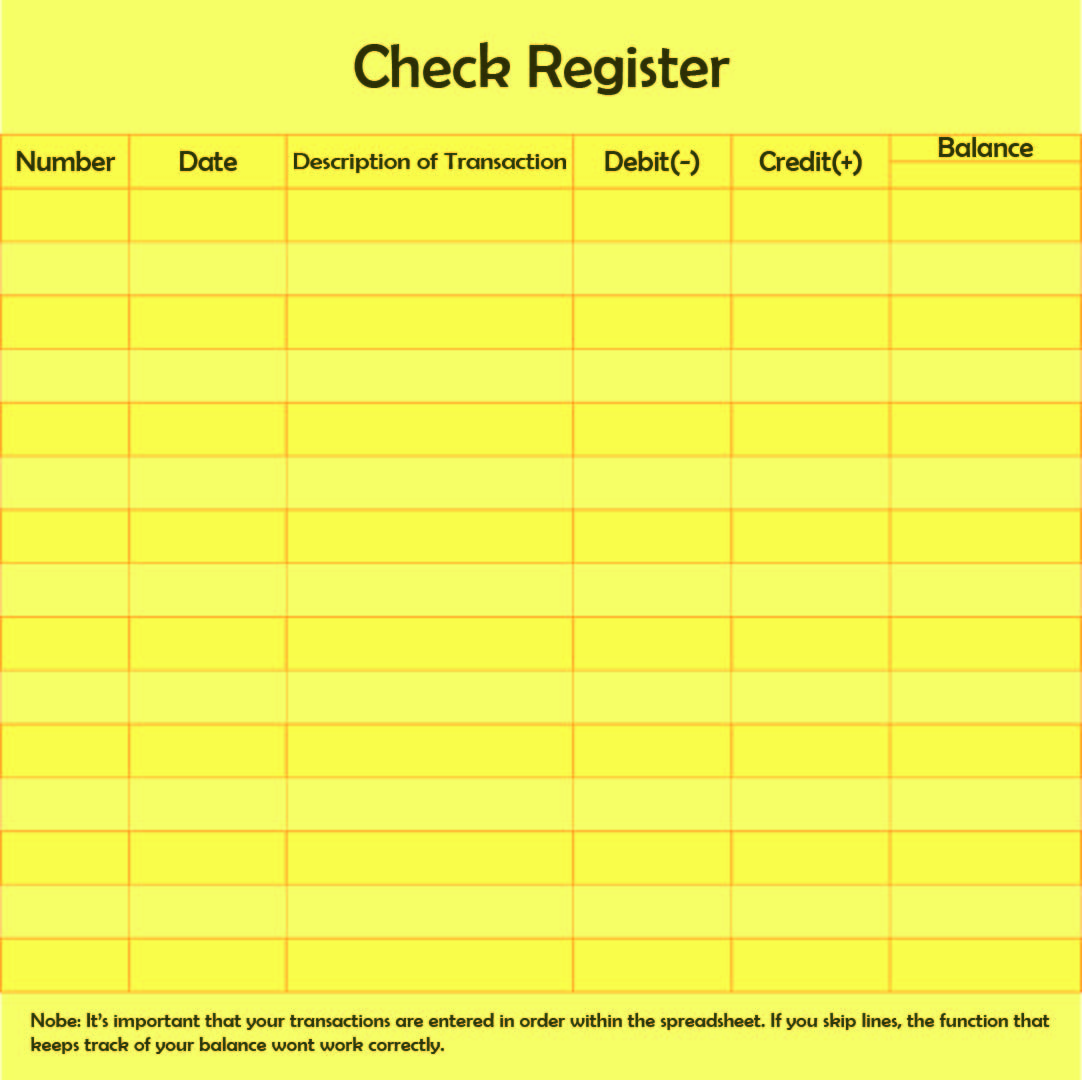
Avoid overdrawing their account and incurring overdraft fees by having an accurate, up-to-date balance.Quickly identify any discrepancies or errors in their account, such as unauthorized transactions, double charges, or missing deposits.Monitor their spending habits and manage their budget more effectively.Balance: The running account balance after each transaction, calculated by adding deposits/credits and subtracting payments/debits.īy consistently updating the check register, an account holder can:.Deposit/Credit: The amount of money deposited or credited to the account.Payment/Debit: The amount of money paid or withdrawn from the account.Description: A brief description of the transaction, such as the payee’s name (for checks), the type of deposit or withdrawal, or a notation for fees or interest.Check number: A unique number assigned to each check, which helps track and manage financial transactions.The check register helps in monitoring account activity, reconciling bank statements, and maintaining an accurate account balance.Ī check register typically includes the following columns: It is typically a booklet or a spreadsheet where an account holder records all transactions, including deposits, withdrawals, checks, electronic transfers, fees, and interest earned or paid.

A check register is a record-keeping tool used to track and manage financial transactions associated with a checking account.


 0 kommentar(er)
0 kommentar(er)
